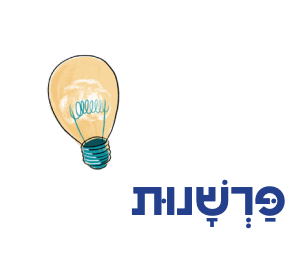Illustration Credit: Elad Lifshitz, Dov Abramson Studio

Commentary פַּרְשָׁנוּת
When Yaakov meets Lavan, the Torah briefly describes Lavan’s two daughters. We learn one detail about Leah.
וְעֵינֵי לֵאָה רַכּוֹת וְרָחֵל הָיְתָה יְפַת־תֹּאַר וִיפַת מַרְאֶה׃
Leah’s eyes were רַכּוֹת (rakkot); Rahel was of beautiful appearance.
What does it mean that Leah’s eyes were “rakkot”? Why does the Torah share this particular detail with us?
וְהַכַּוָּנָה שֶׁהָיוּ נָאוֹת
אֲבָל מִפְּנֵי רַכּוּתָן לֹא הָיְתָה יְכוֹלָה לִרְעוֹת בַּצֹּאן מִשּׁוּם שֶׁאוֹר הַשֶּׁמֶשׁ הָיָה מַזִּיק לָהֶן:
The intention is to say her eyes were beautiful, but they were delicate, so she was unable to shepherd, since the light of the sun would damage them.
Rashi brings a totally different perspective, from the Talmud (Bava Batra 123a). In his explanation, “rakkot” means “worn out from crying”:
שֶׁהָיְתָה סְבוּרָה לַעֲלוֹת בְּגוֹרָלוֹ שֶׁל עֵשָׂו וּבוֹכָה,
שֶׁהָיוּ הַכֹּל אוֹמְרִים שְׁנֵי בָנִים לְרִבְקָה וּשְׁתֵּי בָנוֹת לְלָבָן,
הַגְּדוֹלָה לַגָּדוֹל וְהַקְּטַנָּה לַקָּטָן
She thought she would be destined to marry Esav and cried, because everyone said, “Rivkah has two sons, and Lavan has two daughters—the older daughter for the older son [Leah for Esav], the younger daughter for the younger son [Rahel for Yaakov].”
- One of these פַּרְשָׁנִים (parshanim, commentators) thinks that rakkot is information that helps us understand the story better, and the other thinks this word teaches a lesson about the characters. Which one is which?
- Why might Leah not like the idea of marrying Esav? What could that teach us about her?

-------------------





